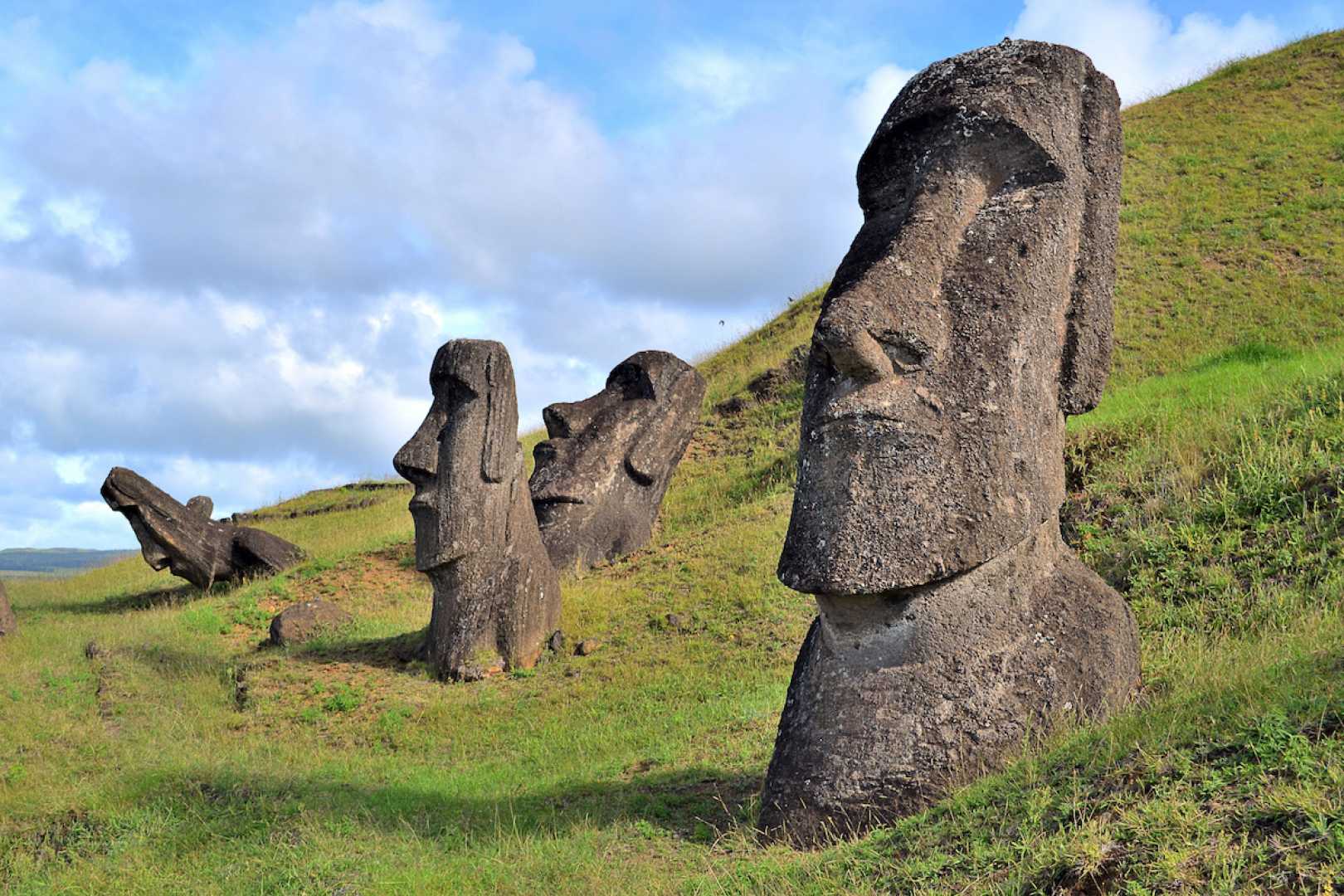News
Unexpected Moai Statue Discovered Underwater on Easter Island

EASTER ISLAND, Chile – A new Maori statue has emerged from the dry lakebed of Easter Island, sparking curiosity among researchers who questioned its existence. The recently revealed statue is one of the smallest moai found and appears isolated among the island’s famous stone figures, known as moai.
The discovery took place in August 2025, as archaeologists observed the lakebed drying up, uncovering historical secrets. Terry Hunt, a professor of archaeology at the University of Arizona, noted, “We think we know all the moai, but then a new one turns up, a new discovery, and in this case, it’s in the lake, at the statue quarry.”
Traditionally, Easter Island is famous for its over 1,000 moai, towering stone heads carved from volcanic ash by the Rapa Nui people. Most moai stand on solid ground, facing towards the ocean, but this one was found in waterlogged land, raising questions about how many more statues might be buried beneath.
Salvador Atan Hito, vice president of Ma’u Henua, the governing body of the island’s national park, stated, “For the Rapa Nui people, this is a very, very important discovery. Because it’s here in the lake and nobody knew it existed, even our ancestors, our grandparents didn’t know about this one.” The moai, carved to honor important figures, are a key part of the island’s cultural heritage.
Ground-penetrating radar technology may soon reveal whether more unknown moai exist beneath the lakebed sediments. Hunt mentioned, “Under the dry conditions that we have now, we may find more. They’ve been hidden by the tall reeds that grow in the lake bed.” This statement hints at the untapped historical potential of the area.
The moai’s dimensions and design reflect the skilled craftsmanship of the Rapa Nui, with some reaching over 30 feet tall and weighing tons. Interestingly, many moai were capped with eye stones during their completion, adding to their significance.
As researchers dive deeper into this new discovery, it not only enriches the understanding of Easter Island’s past, but also emphasizes the ongoing mystery surrounding these monumental figures. Hunt’s team emphasizes that the island, long perceived as isolated, may yet yield more archaeological surprises.












